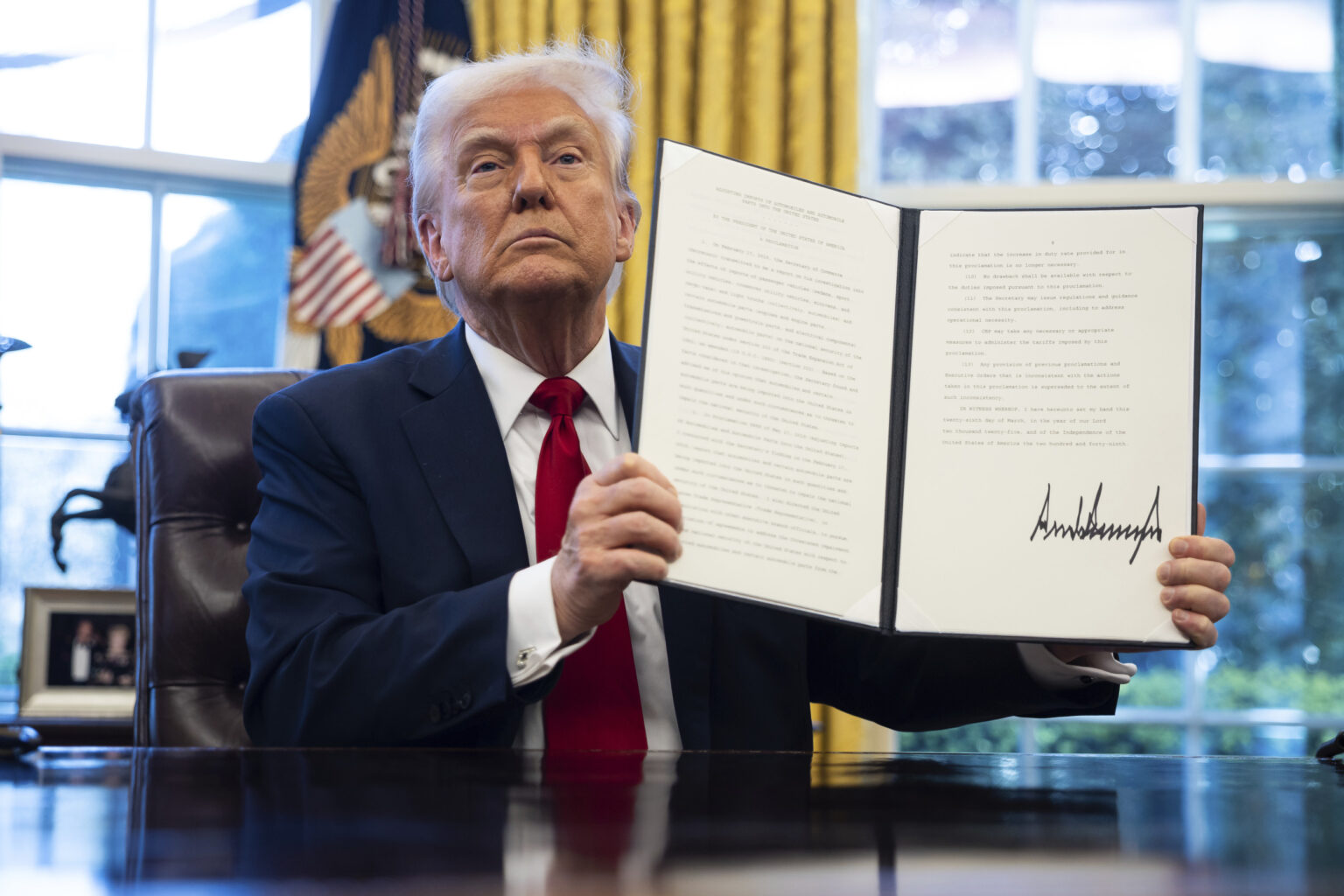President Donald Trump’s new round of tariffs—described by the White House as a “Fair and Reciprocal Plan”—is set to take effect April 2, a move he has dubbed “Liberation Day” for the American economy. The policy will impose duties designed to mirror those levied by foreign governments on U.S. exports, potentially affecting trade with allies and rivals alike.
The administration’s goal is to address what it sees as longstanding imbalances in international trade. “The United States is one of the most open economies in the world, yet our trading partners keep their markets closed to our exports,” reads a February statement from the White House. It highlights several disparities: India’s 100 percent tariff on U.S. motorcycles compared to the 2.4 percent the U.S. charges Indian bikes; and the European Union’s 10 percent car tariff, while the U.S. imposes only 2.5 percent.
The tariffs come amid renewed concern from economists and international leaders that the policy could ignite a broader global trade war. Goldman Sachs recently raised the odds of a U.S. recession to 35 percent, citing falling confidence and signs that the White House may “tolerate economic pain” to achieve trade goals, according to The Economic Times.
Which Countries Will Be Most Hit on Deadline Day?
President Trump has confirmed that the new reciprocal tariffs will apply to “all countries”, ending speculation that only a subset of America’s largest trade partners would be affected. Speaking to reporters aboard Air Force One on Sunday, Trump said the tariff rollout would “start” with every country. This marked a significant expansion of the policy’s scope beyond previous White House suggestions that emphasized targeting specific nations with pronounced trade imbalances.
The White House had earlier highlighted several countries in its justification for the reciprocal plan.
The tariff rollout, still partially shrouded in uncertainty, is expected to target nations with the largest trade imbalances with the U.S., such as China, India, the European Union, and Mexico. In an interview on Fox News, White House trade adviser Peter Navarro said the tariffs could raise $600 billion annually, suggesting average rates around 20 percent.
India is a particular focus of Trump’s tariff ire. “India also charges a 100% tariff on U.S. motorcycles,” the White House stated, “while we only charge a 2.4% tariff on Indian motorcycles.” The fact sheet also noted India’s average Most Favored Nation tariff on agricultural goods is 39 percent, compared to 5 percent in the U.S.
On Monday, Trump told reporters, “We’re going to be very nice, relatively speaking, we’re going to be very kind.” But he emphasized that the measures were non-negotiable until after they were imposed.
Time reported that Trump’s team has weighed multiple structures for the tariffs, including product-by-product rates or uniform averages by country. While a 25 percent tariff on all auto imports is slated to begin April 3, broader reciprocal tariffs are to take effect a day earlier. These could be permanent, Trump has suggested.
How Could Countries Respond to Trump’s Tariffs?
As Trump prepares to enact the tariffs, many U.S. trading partners are actively seeking to avoid escalation. In Delhi, U.S. officials began high-level talks with Indian counterparts last week in hopes of reaching a limited agreement. India’s junior commerce minister, Jitin Prasada, told Parliament the countries are working toward a “multi-sector bilateral trade agreement” aimed at reducing tariffs and increasing market access, according to the BBC.
Reuters has reported that India could be considering slashing tariffs on more than half of U.S. imports worth $23 billion as part of a preliminary deal.
Still, uncertainty reigns. “Officials have not spoken publicly about the contours of the trade talks,” reported the BBC, but Indian and American negotiators have been meeting frequently since Trump took office. Trade Minister Piyush Goyal made an unscheduled visit to Washington in March, and Indian Prime Minister Narendra Modi met with Trump in February.
Other global powers are preparing retaliatory responses. The European Union has announced duties on U.S. goods totaling $28 billion, though its rollout has been delayed to mid-April. Canada has already enacted countermeasures, while Mexico has refrained from imposing new tariffs—at least for now.
Some observers speculate the policy might still be dialed back. Trade attorney Greta Peisch told The Economic Times, “It is entirely possible for fresh tariffs to be swiftly reduced or put on hold.” But Trump himself has downplayed that notion, declaring the April 2 rollout would proceed as planned.
“They ripped us off like no country has ever been ripped off in history and we’re going to be much nicer than they were to us,” Trump said at a press event Monday. (Yahoo)
Read the full article here

